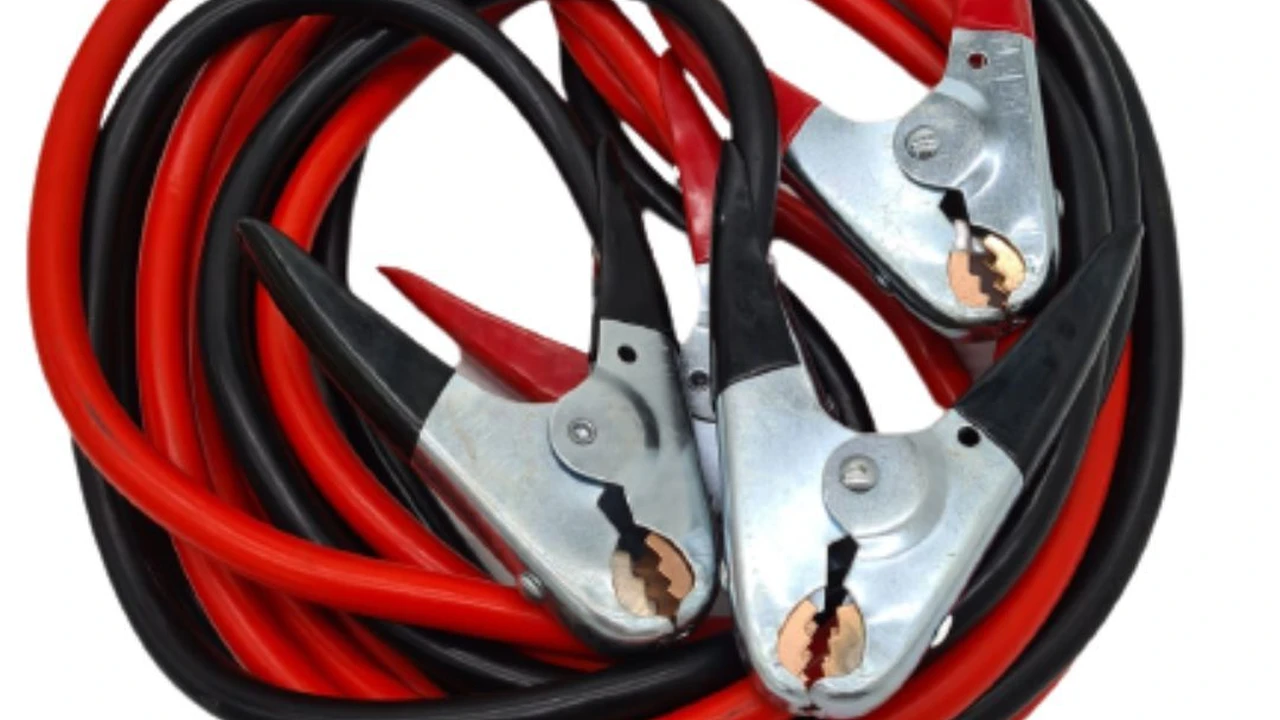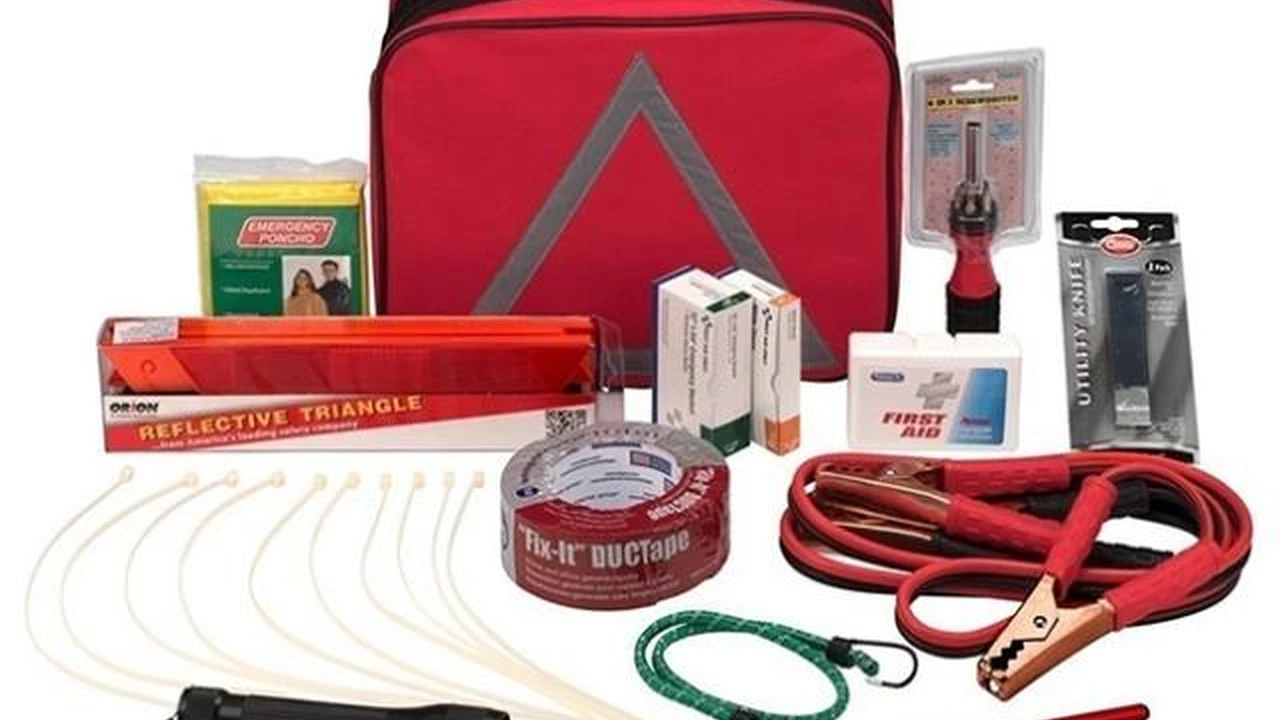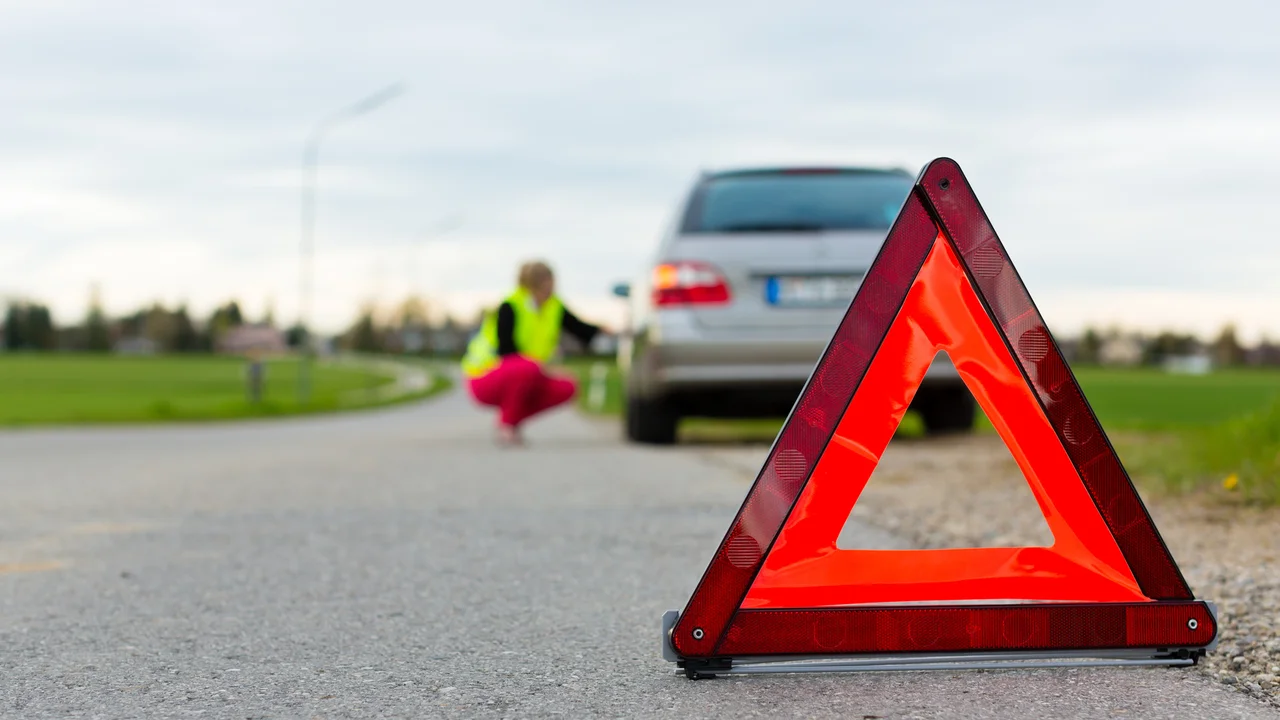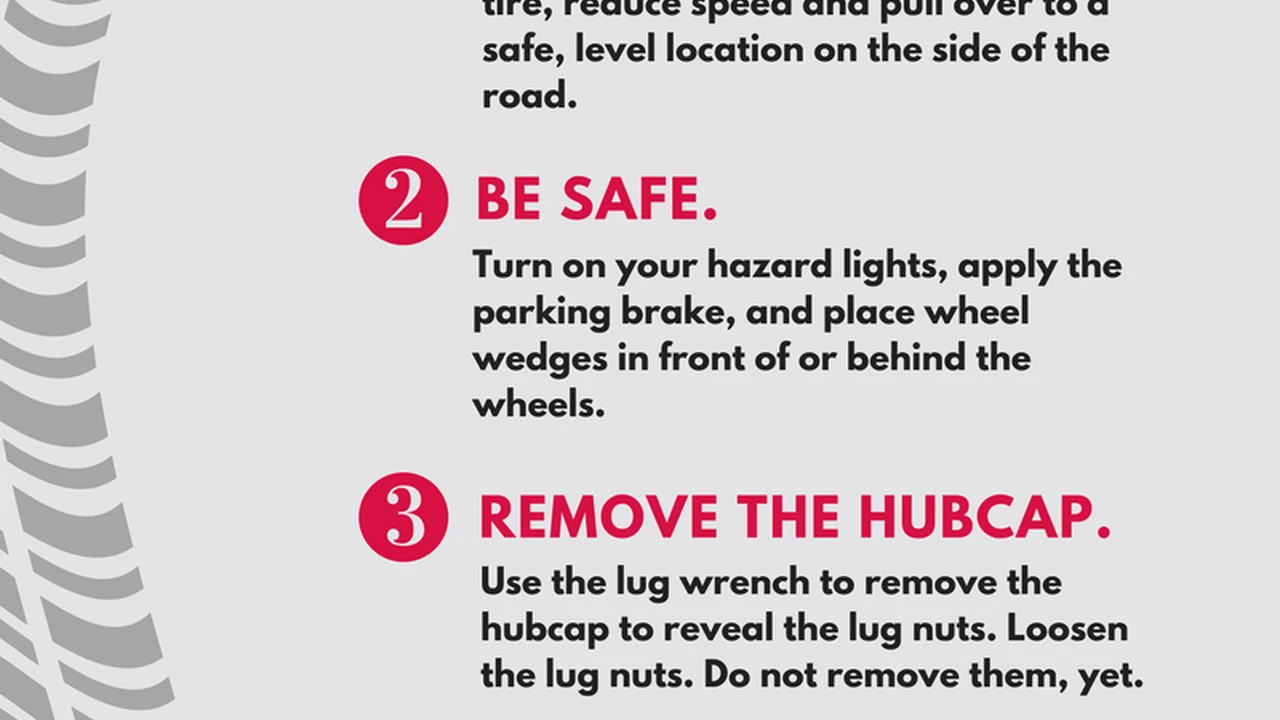7 Best Jumper Cables for Starting a Dead Battery

Okay, so you're stuck. Dead battery. We've all been there. It's frustrating, it's inconvenient, and sometimes, it's downright dangerous. But before you call a tow truck (and spend a fortune), let's see if we can get you back on the road with a good set of jumper cables. But with so many options out there, how do you choose the right ones? Don't worry, we've done the research for you. This guide breaks down the best jumper cables on the market, considering factors like gauge, length, clamp quality, and overall durability. We'll also walk you through how to use them safely. Let's jump in!
Understanding Jumper Cables: Gauge, Length, and Amperage for Jump Starting
Before we dive into specific recommendations, let's cover some basics. The gauge of a jumper cable refers to the thickness of the wires. Lower gauge numbers indicate thicker wires, which can carry more current. For most cars and trucks, a 4-gauge or 6-gauge cable is sufficient. Smaller cars might get away with 8-gauge, but it's always better to err on the side of caution. Length is also important. You want cables that are long enough to comfortably reach between your car's battery and the donor car's battery, even if they're not parked perfectly aligned. 16-20 feet is a good range to aim for. Finally, amperage indicates the maximum current the cables can handle. Higher amperage is better, especially for larger vehicles. Look for cables that can handle at least 400 amps.
Top Jumper Cable Recommendations: Best Jumper Cables Reviews
Alright, let's get to the good stuff. Here are our top picks for jumper cables, considering different needs and budgets:
1. Best Overall: NOCO Genius Boost HD GB70 2000 Amp 12-Volt UltraSafe Lithium Jump Starter
Okay, this isn't *technically* a jumper cable, but it's such a game-changer that we had to include it. The NOCO Genius Boost HD GB70 is a portable jump starter. Think of it as a power bank for your car. It's incredibly easy to use – just connect the clamps to your battery terminals and turn it on. No need for a second car! It's also incredibly safe, with built-in spark-proof technology and reverse polarity protection. It can jump start gasoline engines up to 8 liters and diesel engines up to 6 liters. It also functions as a power bank for charging your phone or other devices. The price is around $200, but the convenience and peace of mind are worth it.
2. Best Heavy-Duty Jumper Cables: Energizer Jumper Cables 1 Gauge 25 Ft
If you need serious power, these are the cables for you. The Energizer 1-Gauge cables are built to handle even the toughest jump-starting situations. They're 25 feet long, giving you plenty of reach, and the heavy-duty clamps provide a secure connection. These are ideal for trucks, SUVs, and other large vehicles. Expect to pay around $60-$80.
3. Best Value Jumper Cables: Cartman 20Ft 8 Gauge Booster Cable
For a more budget-friendly option, the Cartman 20Ft 8 Gauge Booster Cables are a solid choice. While not as powerful as the 1-gauge cables, they're still sufficient for most cars and smaller trucks. The clamps are well-made, and the 20-foot length provides decent reach. These typically cost around $20-$30.
4. Best Portable Jumper Cables: TOPDC Portable Car Jump Starter
Another excellent portable jump starter option, the TOPDC Jump Starter is compact and easy to store. It boasts 2500A peak current, capable of jump-starting up to 8.0L gas or 8.0L diesel engines. It also includes a built-in LED flashlight and USB charging ports. The price is competitive, usually around $80-$100.
5. Best Jumper Cables for Small Cars: EPAuto 16Ft 10 Gauge Jumper Cables
If you drive a smaller car, you don't necessarily need the beefiest cables. The EPAuto 16Ft 10 Gauge Jumper Cables are a good option for compact vehicles. They're lightweight and easy to handle, and the 16-foot length is still adequate for most situations. These are typically priced around $15-$25.
6. Best Jumper Cables with Safety Features: Schumacher Electric Booster Cables
Schumacher is a well-known brand in automotive accessories, and their booster cables are no exception. They offer a range of options, but their models with built-in surge protection and reverse polarity alarms are particularly noteworthy. These features add an extra layer of safety when jump-starting your car. Prices vary depending on the gauge and length.
7. Best Jumper Cables with Integrated Light: STANLEY J5C09D Jump Starter with Compressor
While primarily a jump starter, the STANLEY J5C09D also includes a built-in LED light, which is incredibly handy in low-light conditions. It also has an air compressor for inflating tires. This is a versatile tool to keep in your car. It's priced around $80-$120.
Jumper Cable Comparison: Choosing the Right Cables for Your Needs
So, how do you choose the right jumper cables? Here's a quick comparison table:
| Cable | Gauge | Length | Amperage (or Peak Amps) | Pros | Cons | Approximate Price |
|---|---|---|---|---|---|---|
| NOCO Genius Boost HD GB70 | N/A (Jump Starter) | N/A | 2000A Peak | No need for a second car, safe, versatile | More expensive than traditional cables | $200 |
| Energizer 1-Gauge | 1 Gauge | 25 ft | 800A | Heavy-duty, long reach | More expensive, bulky | $60-$80 |
| Cartman 8-Gauge | 8 Gauge | 20 ft | 400A | Affordable, decent length | Not as powerful as thicker cables | $20-$30 |
| TOPDC Portable Car Jump Starter | N/A (Jump Starter) | N/A | 2500A Peak | Portable, powerful, includes flashlight | Requires charging | $80-$100 |
| EPAuto 10-Gauge | 10 Gauge | 16 ft | 300A | Lightweight, affordable | Not suitable for large vehicles | $15-$25 |
| Schumacher Electric | Varies | Varies | Varies | Safety features, reliable brand | Price varies | Varies |
| STANLEY J5C09D | N/A (Jump Starter) | N/A | 1000A Peak | Jump starter, light, air compressor | Bulky | $80-$120 |
Using Jumper Cables Safely: Step-by-Step Guide to Jump Starting a Car
Safety first! Here's how to use jumper cables safely:
- Park the cars close enough so the cables can reach, but don't let them touch. Turn off both cars.
- Connect the RED clamp to the POSITIVE (+) terminal of the dead battery.
- Connect the other RED clamp to the POSITIVE (+) terminal of the good battery.
- Connect the BLACK clamp to the NEGATIVE (-) terminal of the good battery.
- Connect the other BLACK clamp to an UNPAINTED METAL SURFACE on the dead car, away from the battery. (This is crucial to prevent sparks near the battery.)
- Start the good car and let it run for a few minutes.
- Try starting the dead car. If it doesn't start immediately, let the good car run for a few more minutes.
- Once the dead car starts, carefully disconnect the cables in the REVERSE order you connected them: Black from the metal surface, Black from the good battery, Red from the good battery, Red from the dead battery.
- Let the car that was jumped run for at least 15-20 minutes to recharge the battery.
Troubleshooting Jumper Cable Problems: What to Do When Jump Starting Fails
Sometimes, even with jumper cables, your car won't start. Here are a few things to check:
- Cable Connections: Make sure the clamps are securely attached to the battery terminals and the metal surface.
- Battery Condition: If the battery is severely damaged or completely dead, jumper cables might not be enough. You might need a new battery.
- Alternator Issues: If the car starts with a jump but dies shortly after, the alternator might not be charging the battery properly.
- Other Mechanical Problems: There could be other issues preventing the car from starting, such as a faulty starter motor.
Jumper Cable Maintenance: Keeping Your Cables in Good Condition
To ensure your jumper cables are ready when you need them, here are a few maintenance tips:
- Store them properly: Keep them in a cool, dry place, away from direct sunlight.
- Check for damage: Regularly inspect the cables for cracks, fraying, or corrosion.
- Clean the clamps: Use a wire brush to clean any corrosion from the clamps.
Jumper Cables vs. Portable Jump Starters: Which is Right for You?
We've mentioned both jumper cables and portable jump starters. Which one is the better choice? Here's a breakdown:
- Jumper Cables: Require a second car, more affordable, reliable (no batteries to charge), require knowledge of how to use them safely.
- Portable Jump Starters: Don't need a second car, easy to use, can also be used to charge devices, require charging, can be more expensive.
Ultimately, the best choice depends on your individual needs and preferences. If you want a simple, affordable, and reliable solution, jumper cables are a good option. If you want a more convenient and versatile solution, a portable jump starter is worth considering.
Where to Buy Jumper Cables: Finding the Best Deals on Jumper Cables
You can find jumper cables at most auto parts stores, retailers like Walmart and Target, and online retailers like Amazon. Shop around to compare prices and read reviews before making a purchase.
:max_bytes(150000):strip_icc()/277019-baked-pork-chops-with-cream-of-mushroom-soup-DDMFS-beauty-4x3-BG-7505-5762b731cf30447d9cbbbbbf387beafa.jpg)






